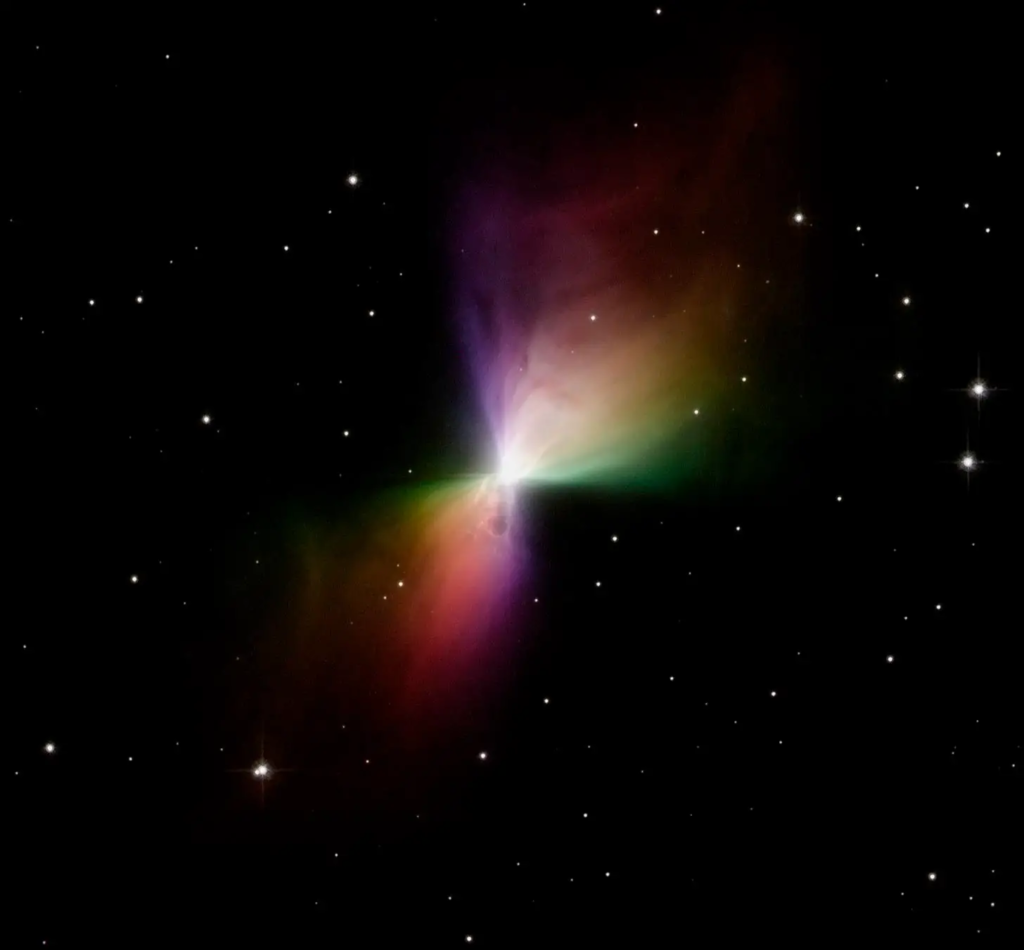The Hubble Space Telescope, renowned for its ability to capture breathtaking images of distant celestial objects, has managed to “catch” the mesmerizing Boomerang Nebula in its lens. This stunning astronomical phenomenon, also known as the “Boomerang Nebula” , derives its name from its unique shape and appearance, resembling a boomerang or a bent hourglass.
The Boomerang Nebula is located approximately 5,000 light-years away from Earth, within the southern constellation Centaurus. What makes this nebula so remarkable is its extremely cold temperatures, which are close to absolute zero. As a result, the gas and dust within the nebula have reached temperatures as low as -457 degrees Fahrenheit (-272 degrees Celsius), making it one of the coldest known places in the universe.
This chilly environment gives rise to a striking optical effect known as “infrared emission.” The Hubble Space Telescope, equipped with advanced instruments capable of detecting infrared light, has captured this phenomenon in intricate detail. When viewed through infrared filters, the Boomerang Nebula appears like a ghostly apparition with wisps of glowing, icy material that stand out against the darkness of space.

The primary cause of the Boomerang Nebula’s frigid conditions is its central star. Which is in the process of transitioning from a red giant to a white dwarf. During this phase, the star expels its outer layers into space, forming a shell of gas and dust. The star’s powerful stellar winds, combined with its decreasing temperature, have resulted in the nebula’s numbingly cold temperatures.
In the captivating image captured by the Hubble Space Telescope, the Boomerang Nebula’s intricate structure is on full display. The nebula’s hourglass shape is evident, with its two lobes extending away from the central star in opposite directions. The outer layers of gas and dust have been sculpted. By the star’s stellar winds, creating intricate patterns that highlight the complex interplay between energy and matter in space.
The Hubble’s observation of the Boomerang Nebula goes beyond just its aesthetic appeal. It provides valuable insights into the life cycle of stars and the ways in which they influence their surroundings. By studying such extreme environments. Astronomers can gain a better understanding of the processes that shape the cosmos. And drive the evolution of galaxies, stars, and planetary systems.
In summary, the Hubble Space Telescope’s observation of the Boomerang Nebula is a testament to both the telescope’s technological prowess and the sheer beauty of the cosmos. This captivating image not only showcases the cold and ghostly wonders of space. But also contributes to our understanding of the intricate and fascinating processes that shape the universe we inhabit.

